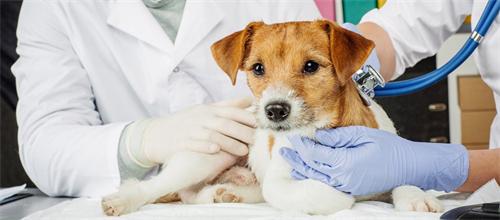Pet Insurance Trends in 2025: What's Next? Is It Right for You?

As we head into 2025, the pet ownership landscape will continue to evolve, and pet insurance will become a key component of responsible pet care. Soaring veterinary costs, coupled with the increasing humanization of pets, have transformed pet insurance from a niche product into a mainstream necessity for many pet owners.
Pet Insurance Adoption Surges
The pet insurance industry is experiencing unprecedented growth. In North America, the number of insured pets will exceed 7 million by the end of 2024, a significant increase from the previous year. This growth momentum is expected to continue, with the global pet insurance market projected to reach nearly $80 billion by 2033, growing at a compound annual growth rate (CAGR) of over 17% from 2025 to 2033. Several key factors are driving the growing popularity of pet insurance:
Rising Veterinary Costs: The cost of veterinary care has skyrocketed in recent years. Complex diagnostic tools, specialized treatment options, and advanced surgeries have made pet healthcare increasingly expensive. Pet insurance can help mitigate these costs, provide financial assistance in medical emergencies, and encourage more proactive veterinary care.
Pet Humanization: Pets are increasingly viewed as family members, not property. This emotional bond is driving owners to seek the same care and attention they would give their pets, leading to greater interest in insurance plans that offer comprehensive coverage.
Awareness and Accessibility: Growing awareness of pet insurance, coupled with digital platforms that make comparisons and registration easier, has made it easier than ever for pet owners to obtain coverage that suits their needs and budget.
Understanding Pet Insurance Coverage
Insurance Types
Accident-Only Plans: These plans cover injuries resulting from accidents, such as broken bones, poisoning, or bites, but exclude illness and routine care.
Accident and Sickness Plans: These plans offer broader coverage, including accidents and a range of illnesses, such as infections, cancer, and chronic conditions.
Comprehensive Plans: Sometimes called lifetime plans or wellness plans, these plans offer extensive coverage, typically including preventative care, dental cleanings, hereditary conditions, and ongoing treatment for chronic conditions.
Common Exclusions
Pre-Existing Conditions: Most policies exclude coverage for conditions that existed before the policy took effect, even if they were undiagnosed at the time.
Routine and Preventative Care: Services such as vaccinations, grooming, flea and tick prevention, or sterilization are generally not covered unless otherwise specified in the health supplement.
Breed-Specific Illnesses: Some policies exclude hereditary or congenital conditions common to certain breeds, such as hip dysplasia in large dogs or breathing problems in flat-faced breeds.
Policy Limits and Benefits
Pet insurance plans vary widely in their benefit structures. Some plans have annual or lifetime maximums, while others set limits based on incidents or circumstances. For example, even if your plan has an annual maximum benefit of $20,000, certain surgeries or diagnostic procedures may be capped at $2,000. Reading the fine print is crucial to understanding your actual benefits in different situations.

Emerging Trends in Pet Insurance
Technology Integration
By 2025, technology will transform the pet insurance experience, making it more transparent, efficient, and data-driven:
AI-Powered Claims Processing: Artificial intelligence and machine learning are streamlining the claims process. Claims that once took weeks can now be processed in minutes, improving customer satisfaction and reducing administrative costs.
Pet Telemedicine: Virtual consultations with veterinarians are becoming standard features in many pet insurance plans. These services are convenient, fast, and affordable, especially for non-emergency issues.
Wearable Health Devices: Smart collars and wearable sensors that monitor pets' activity, sleep, and heart rate are increasingly being integrated into insurance models. Data from these devices helps insurers more accurately assess risk and reward responsible pet owners with lower premiums.
Customizable and Modular Plans
One of the most notable trends expected in 2025 is the rise of customized insurance plans. Instead of offering a one-size-fits-all plan, insurers will allow pet owners to select specific modules based on their pet's unique health conditions, such as dental care, cancer treatment, or holistic therapies. This flexibility allows pet owners to pay only for the coverage they value most.
Preventive Care Add-ons
Insurers are increasingly recognizing the value of preventive care. More and more plans include or offer optional services such as physicals, vaccinations, microchipping, and behavioral counseling. By encouraging preventive care, these plans aim to reduce the likelihood of costly illnesses in the future.
Partnerships and Member Benefits
Corporate collaborations are becoming increasingly common within the pet insurance ecosystem. Retailers, pharmacies, and even pet food brands are partnering with insurers to offer bundled benefits. For example, club memberships or loyalty programs may now include discounts on pet medications, grooming, or emergency veterinary visits. These partnerships make comprehensive pet care more affordable and convenient.
Is pet insurance right for you?
Determining whether pet insurance is a wise investment depends on your personal situation and your pet's specific needs.
Pet's age and health: Young, healthy pets are generally less expensive to insure, and insuring early helps ensure future health coverage. Older pets or those with pre-existing conditions may face exclusions or higher premiums, but specialized senior pet insurance plans are becoming increasingly popular.
Breed and lifestyle factors: Certain breeds are more susceptible to inherited diseases or injuries. For example, large dogs may have hip problems, while small dogs may have dental or joint issues. Active pets or outdoor cats may benefit from accident coverage, while indoor pets may need more health coverage.
Financial Preparedness: If you can easily afford to pay several thousand dollars out of pocket for an emergency, self-insurance may be a wise move. However, for most pet owners, pet insurance provides crucial financial protection, giving you peace of mind for unexpected expenses.
Risk Tolerance: Consider your tolerance for uncertainty. Insurance transfers the risk of large expenses to a third party, ensuring budget predictability even in emergencies.
Evaluating Insurance Providers
When choosing a pet insurance provider, focus on:
Reputation and Reliability: Look for companies with strong financial stability and good customer reviews, especially regarding claims handling and transparency.
Coverage and Flexibility: Compare each policy's coverages and exclusions. Does it cover chronic conditions, dental care, or alternative therapies? Can you choose your own veterinarian?
Cost vs. Value: Balance premiums, deductibles, and reimbursement rates. Sometimes, a slightly higher premium may provide better coverage, potentially saving you more in the long run.
Customer Support and Tools: Many modern insurance companies now offer mobile apps that make it easy to file claims, manage policies, and access veterinary advice 24/7.
The Future of Pet Insurance
The pet insurance industry is poised for significant transformation over the next decade as technology, data, and consumer expectations continue to evolve.
Global Expansion
Pet ownership is growing globally, particularly in developing countries where the pet care industry is still maturing. Insurers are expanding into new markets, creating opportunities for more affordable and localized insurance products.
Data-Driven Personalization
Advanced analytics and artificial intelligence will continue to drive the development of personalized pricing models. In the future, insurers may leverage real-time data from wearable devices or veterinary records to dynamically adjust premiums based on a pet's health and lifestyle—similar to usage-based car insurance.
Preventive and Holistic Health Insurance
More and more plans are likely to shift toward holistic wellness, covering not only traditional therapies but also preventative and alternative therapies such as acupuncture, hydrotherapy, and nutritional counseling. This aligns with the growing trend toward integrated veterinary medicine.
Integration with Veterinary Networks
Expect closer partnerships between insurers and veterinary networks, enabling direct billing and reducing out-of-pocket expenses during visits. This will streamline the claims process and create a smoother customer experience.
In 2025, with rising veterinary costs, technological advancements, and increasingly personalized coverage, insurance provides financial security and emotional peace of mind for millions of pet owners worldwide. Whether you're a new pet owner or a seasoned animal lover, taking the time to explore options, understand the fine print, and tailor your coverage to your pet's lifestyle can make a significant difference. With continued innovation in the pet industry, pet insurance not only protects our pets' health but also deepens the emotional bond we share with them—ensuring that every wag of their tail, every purr, and every chirp is filled with a sense of security and care.



